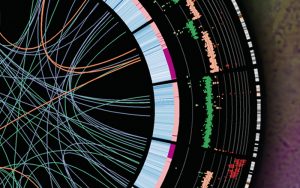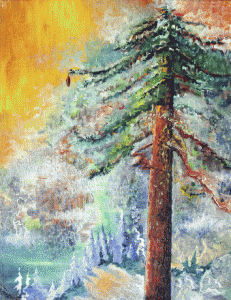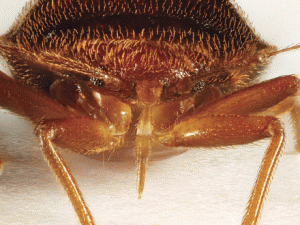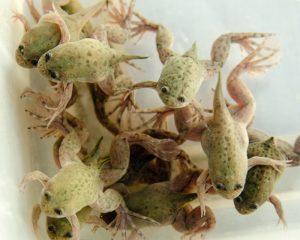Enter your address to receive notifications about new posts to your email.
Science & Publishing
-
Science & Publishing
Publish your WGS data in G3 Genome Reports
Do you have whole genome sequence (WGS) data burning a hole in your pocket? Many high-quality WGS datasets languish unpublished and undescribed because they may not always—in isolation—reveal substantial new biological insights. However, the editors of G3: Genes|Genomes|Genetics recognize that WGS data on strain variation, comparative analysis of different model organism species, and other rich…
-
Science & Publishing
Fly model of traumatic brain injury untangles factors tied to mortality
Each year, emergency departments in the US treat almost 700,000 people for traumatic brain injury (TBI). The outcome depends largely on the severity and location of the injury, but these aren’t the only factors. Age also plays a role, with children often recovering more fully than do adults. The patient’s diet following the injury may…
-
Science & Publishing
New schizophrenia risk genes found by computational analysis
Symptoms of schizophrenia most commonly begin to creep up in young adulthood. Although genetics play a major role in this complex disorder, narrowing down the search for the genes involved has proven frustratingly difficult. Risk loci identified by genome-wide association studies (GWAS) may contain several genes, making it unclear which of these contribute to pathology.…
-
Science & Publishing
December GENETICS Highlights
Check out the December issue of GENETICS by looking at the highlights or the full table of contents! ISSUE HIGHLIGHTS This Month’s Centennial Articles Edward East on the Mendelian basis of quantitative trait variation, pp. 1321-1323 Michael Turelli Reviews editor Michael Turelli introduces Edward East’s 1916 Classic on the Mendelian basis of a continuously varying phenotype. This work exquisitely…
-
Science & Publishing
New in G3: resistant bed bugs, stressed cotton, and outbred mice
Check out the December issue of G3! Table of Contents Meeting Report Meeting Report: The Allied Genetics Conference 2016 Organizers of The Allied Genetics Conference 2016 G3 December 2016 6:3765-3786; doi:10.1534/g3.116.036848 Full Text | Full Text (PDF) Investigations Assessing the Gene Content of the Megagenome: Sugar Pine (Pinus lambertiana) Daniel Gonzalez-Ibeas, Pedro J. Martinez-Garcia, Randi…
-
Science & Publishing
Dog pedigrees shed light on recombination
Recombination within the genome isn’t random. This swapping of DNA segments between one chromosome and its homolog preferentially affects specific genome regions called hotspots. These regions can have recombination rates many times higher than other areas of the genome, and the rapid shuffling of genetic information is thought to be important in evolution. The location…
-
Science & Publishing
TAGC Videos & Meeting Report: The Allied Genetics Conference online!
The Allied Genetics Conference was an experiment for the GSA. We brought together under one roof seven separate research community meetings: C. elegans, ciliate, Drosophila, mouse, yeast, zebrafish, and population, evolutionary, and quantitative genetics. Today we are launching another experiment, this time, to communicate results presented at the meeting. Thanks to a generous grant from the…
-
Science & Publishing
Sex chromosome turnover in frogs hints at evolutionary patterns
Sex chromosomes have evolved from autosomes hundreds of times across the tree of life. In mammals, sex is controlled by the Y chromosome-linked gene SRY, which triggers the development of male anatomy. Sex determination in most mammals is extremely conserved; essentially all marsupials and placental mammals share the same pair of X and Y chromosomes…
-
Science & Publishing
Cold-loving fungi fight frostbite, but can’t take the heat
To the unaided eye, Antarctic soil and alpine glaciers may appear to be barren wastelands devoid of life. But some microbes call hostile habitats like these home. Research on one such organism, published in the latest issue of G3, reveals some of the mechanisms behind cold adaptation—and explains why these otherwise hardy creatures can’t survive…
-
Science & Publishing
Speed limits in bacterial factories
In the fast-paced life of a bacterium, the ability to manufacture proteins quickly and efficiently is crucial. In these organisms, mRNAs—the templates for building proteins—have a string of bases near the start called the Shine-Dalgarno (SD) sequence. This motif increases the rate at which translation is initiated. Some results suggest that the presence of SD…
-
Science & Publishing
High Temperatures Suppress Seizures in a Fruit Fly Epilepsy Model
The human brain is an amazing machine powered by electricity. Carefully controlled patterns of changing electrical charges in neurons allow us to to think, move, and speak. When this system is disrupted, very bad things happen. A seizure occurs when a sudden surge of electrical activity in the brain interrupts normal functioning. Seizures are accompanied…


![Traumatic brain injury is a risk for those who participate in contact sports, such as boxing and Muay Thai. By Eric Langley [CC BY 2.0], via Wikimedia Commons.](https://s36063.pcdn.co/wp-content/uploads/2016/12/npjxWixCqK0OdXXC-pic-300x199.jpg)
![A cloth embroidered by a person with schizophrenia. By cometstarmoon [CC BY 2.0], via Wikimedia Commons](https://s36063.pcdn.co/wp-content/uploads/2016/12/rsz_cloth_embroidered_by_a_schizophrenia_sufferer-300x225.jpg)





![By 23am.com (Antarctica Sailing Trip) [CC BY 2.0], via Wikimedia Commons.](https://s36063.pcdn.co/wp-content/uploads/2016/11/rsz_1antarctica_sailing_trip_pct283253678755pct29-300x201.jpg)
![By BMW Werk Leipzig (http://bmw-werk-leipzig.de) [CC BY-SA 2.0 de], via Wikimedia Commons](https://s36063.pcdn.co/wp-content/uploads/2016/11/rsz_bmw_leipzig_media_050719_download_karosseriebau_max-300x200.jpg)
